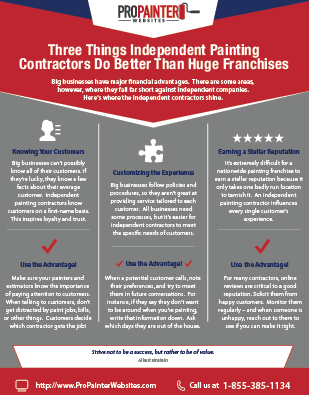Understand How Seasonal Problems Affect The Success Of Industrial Outside Paint And Find Out The Optimal Periods To Ensure Long-Lasting End Results For Your Task
Understand How Seasonal Problems Affect The Success Of Industrial Outside Paint And Find Out The Optimal Periods To Ensure Long-Lasting End Results For Your Task
Blog Article
Content By-McLamb Chaney
When you're planning a commercial external painting task, seasonal variables can make or break your outcomes. You'll want to consider how temperature and moisture effect paint application and drying times. Choosing painters near me can ensure your paint sticks correctly and lasts much longer. However which seasons are really the best for this kind of work? Let's check out the key elements that can influence your task's success.
The Effect of Temperature Level on Paint Application
When you're preparing a commercial external painting job, the temperature level can substantially impact just how well the paint adheres and dries out.
Ideally, interior house painter want to repaint when temperatures vary in between 50 ° F and 85 ° F. If it's also chilly, the paint might not cure appropriately, leading to problems like peeling off or cracking.
On the other side, if it's as well hot, the paint can dry out too promptly, preventing appropriate bond and resulting in an irregular surface.
You should also think about the moment of day; early morning or late afternoon supplies cooler temperature levels, which can be much more favorable.
Constantly check the producer's referrals for the details paint you're making use of, as they typically supply advice on the perfect temperature level range for ideal outcomes.
Humidity and Its Effect on Drying Times
Temperature isn't the only ecological variable that influences your industrial exterior painting job; humidity plays a significant role too. High moisture levels can slow down drying times drastically, impacting the general top quality of your paint work.
When the air is saturated with moisture, the paint takes longer to treat, which can cause concerns like bad adhesion and a greater threat of mold growth. If https://www.chicoer.com/2023/03/25/painting-the-town-green on a particularly moist day, be gotten ready for prolonged delay times between layers.
It's vital to monitor regional weather conditions and plan accordingly. Preferably, aim for moisture levels in between 40% and 70% for ideal drying.
Keeping these factors in mind ensures your task stays on track and delivers a lasting coating.
Best Seasons for Commercial Outside Paint Projects
What's the very best time of year for your commercial outside paint jobs?
Spring and early loss are typically your best choices. Throughout these seasons, temperature levels are mild, and moisture levels are commonly lower, developing suitable problems for paint application and drying.
Prevent summertime's intense heat, which can cause paint to dry also rapidly, causing bad attachment and surface. Similarly, winter's cool temperatures can impede appropriate drying and treating, taking the chance of the durability of your paint job.
Aim for days with temperatures in between 50 ° F and 85 ° F for optimal outcomes. Remember to inspect the regional weather forecast for rain, as damp problems can destroy your task.
Planning around these variables ensures your painting task runs efficiently and lasts much longer.
Verdict
To conclude, intending your industrial outside painting jobs around seasonal factors to consider can make a significant distinction in the outcome. By organizing work during the excellent temperatures and moisture degrees, you'll make sure far better bond and drying out times. Keep in mind to keep an eye on regional weather report and choose the correct time of year-- spring and early loss are your best options. Taking these steps will certainly assist you accomplish a durable and expert coating that lasts.
